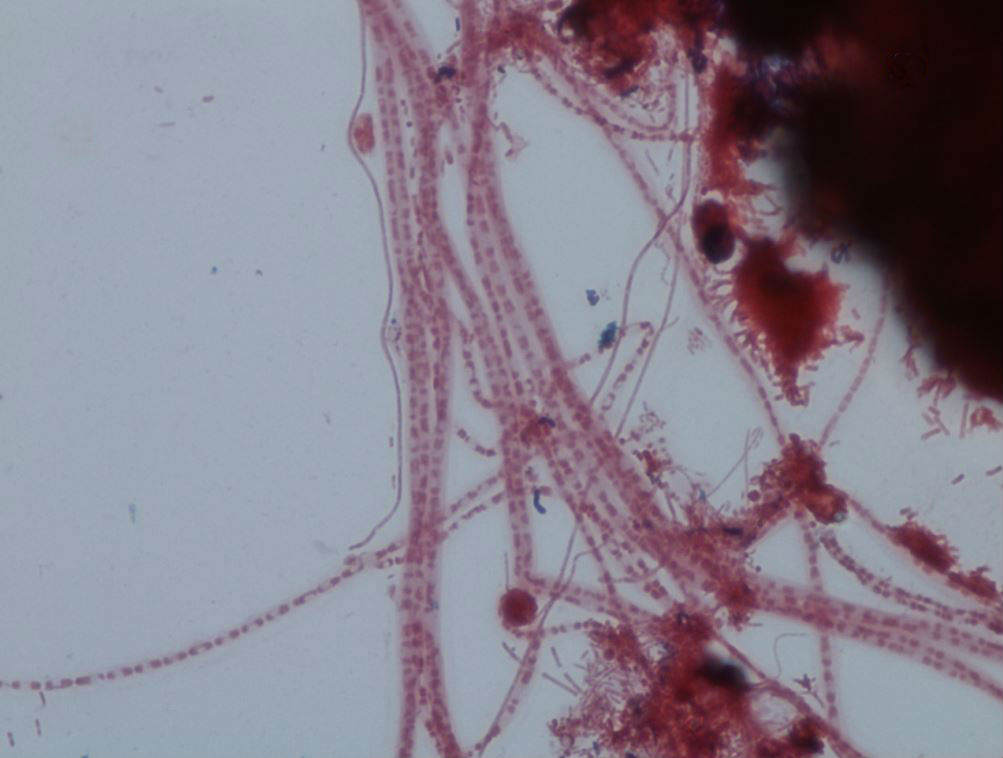Nutrient deficiency, or the lack of sufficient levels of ammonia and phosphorus, can prevent an industrial wastewater lagoon from removing BOD adequately. In this episode of LDIB-TV, lagoon specialist Julie Hartwig explains how to diagnose and correct industrial lagoon nutrient deficiency. She has a BS in Civil Engineering from the University of Illinois at Urbana-Champaign and recently earned her master’s in Environmental Engineering from Penn State. Formerly a water and wastewater treatment rep for a major water technology company, Julie has extensive experience working with industrial manufacturing and food & beverage facilities. Watch the video and read on for highlights.
While municipal lagoons often struggle to meet ammonia and phosphorus limits, industrial facilities can have the opposite problem: not enough nutrients to treat BOD.
The biological wastewater treatment process requires a balance of elements: carbon (BOD), nitrogen (as ammonia—NH3), and phosphorus (in the form of phosphate—PO4). The ratio should be:
100 parts BOD to 5 parts nitrogen to 1 part phosphorus
Unlike municipal wastewater, which is fairly consistent, industrial wastewater can vary tremendously and be highly specific. The components of industrial wastewater change from factory to factory, or even within the same facility depending on what’s being produced. Chemicals from cleaning cycles (which can skew pH) and wildly variable flows and loadings make industrial wastewater treatment a challenge.
How do you know if your industrial lagoon is nutrient deficient?
First, are you meeting your treatment goals? An industrial lagoon that is undertreating wastewater risks fines, production disruption, and odor complaints. The most common causes of poor lagoon performance are hydraulic short circuiting and insufficient aeration, not nutrient deficiency, so the first step is evaluate those factors:
- Is there short circuiting? Short circuiting, or wastewater flowing through the lagoon without adequate retention time, is a common cause of poor performance. Read our blog, Four Causes of Wastewater Lagoon Short-Circuit, for more on this important topic.
- Do you have sufficient aeration and mixing and enough DO? Dissolved oxygen is the lifeblood of the wastewater treatment lagoon. Aeration ensures the bacteria have enough DO to consume BOD, and mixing keeps the oxygen, the bugs, and the waste in constant contact.
Diagnosing nutrient deficiency in industrial wastewater lagoons
If your aeration and mixing are adequate and you aren’t short circuiting, ammonia or phosphorus deficiency may be the culprit. Testing is the next step.

Microscopic examination of bacteria: Certain filamentous bacteria grow very well in nutrient deficient waters, and each species of bacteria is associated with a very specific set of conditions. For example, according to author Michael H. Gerardi in The Biology and Troubleshooting of Facultative Lagoons, Sphaerotilus (S. natans) indicates a low dissolved oxygen level, warm water temperature, and low nitrogen or phosphorus.
The lab will identify which types of bacteria are present in the lagoon. Certain bacteria, like Haliscomenobacter (H. hydrossis), Thiothrix, and Type 201N, thrive in conditions of nutrient deficiency. If the most prevalent bacteria are known to prefer a low ammonia or phosphorus environment, supplementation with the missing element will get the lagoon back in balance.
For a deeper dive into types of bacteria and their preferred conditions, check out the Wisconsin Wastewater Association’s presentation, Identification & Control of Filamentous Bacteria. It was authored by Toni Glymph, Senior Environmental Microbiologist for the Metropolitan Water Reclamation District of Greater Chicago, which operates one of the world’s largest wastewater treatment plants. She is also a highly regarded author and trainer in the field of wastewater microbiology.
Correcting nutrient deficiency in industrial lagoons
In the video, Julie offers quick examples of how two industrial facilities corrected a nutrient deficiency:
- A manufacturer of sugary snack foods was not meeting their treatment goals, despite having a well aerated lagoon. Their wastewater had very high BOD but almost no ammonia or phosphorus. Testing revealed that the lagoon’s bugs were starving for ammonia, so the facility purchased a tank of anhydrous ammonia and metered it into the lagoon with the influent.
- Landfill leachate typically has very high BOD and ammonia but very little phosphorus. To correct the imbalance, a landfill operator obtained a barrel of phosphoric acid and dripped it into their system.
While industrial lagoon nutrient deficiency is not that simple to diagnose, it’s fairly simple to correct. If microscope testing determines that bacteria associated with low nutrient conditions are prevalent within your lagoon, adding a supplement like phosphoric acid, ammonia, or urea will allow the BOD-consuming bacteria to grow healthily.
Subscribe to our You Tube Channel

Our Lagoons Do It Better channel on You Tube features informative videos on a variety of topics—like lagoon aeration, algae, lagoon ammonia and phosphorus removal, hydraulics, and more—designed to help the lagoon operator Do It Better. Subscribe now!
